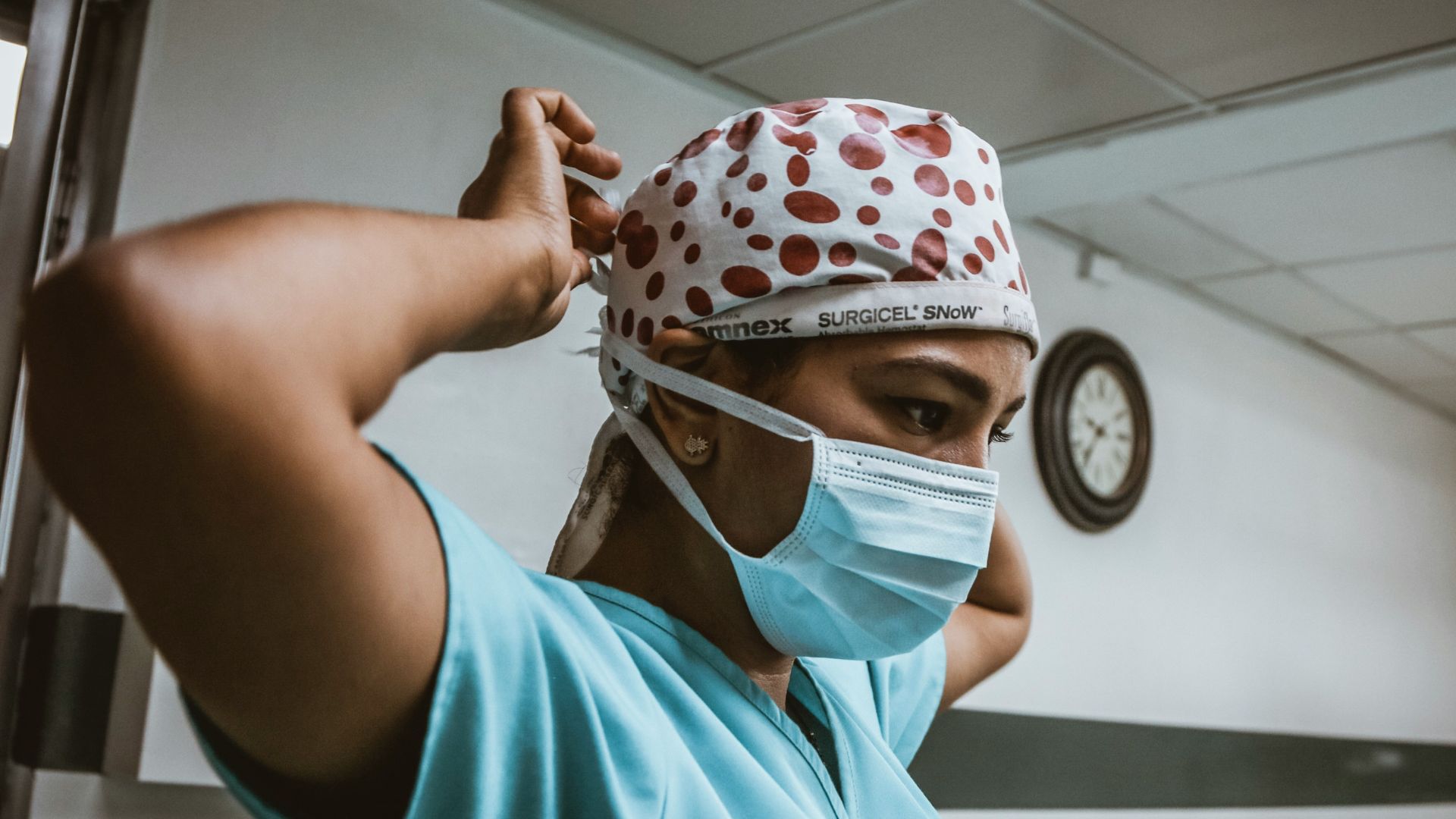Researchers at University College London are examining medical procedures performed decades ago that seem to have triggered cases of Alzheimer’s disease.
In this new study, key cases of the brain disorder show a link between them and a growth hormone treatment.
What Is Alzheimer’s?

Alzheimer’s is a type of dementia that affects memory, thinking, and behavior. Those with a family history of Alzheimer’s are at higher risk as they age, or if they have certain medical conditions or unhealthy lifestyle behaviors.
In the US, nearly 5.8 million people have Alzheimer’s disease and related dementias. According to the Centers for Disease Control and Prevention, individuals 65 years old or older account for the majority of these cases, but about 200,000 cases occur in people under 65.
Looking At a Cause for Alzheimer’s

In a new study published in “Nature Medicine,” researchers focused on a procedure in which doctors administered a type of human growth hormone, c-hGH, extracted from deceased people’s pituitary glands.
The study notes that this growth hormone treatment has led to a greater amount of amyloid-beta protein in the brain. An excess of this protein could cause Alzheimer’s.
The Connection Between the Decline

The study looked at eight people who received the treatment as children. Five of these patients developed symptoms of dementia and were diagnosed with Alzheimer’s.
According to the study, the five patients who developed the brain disorder began to show signs of cognitive decline between the ages of 38 and 55.
The Cause In the Five Patients

“We have found that it is possible for amyloid-beta pathology to be transmitted and contribute to the development of Alzheimer’s disease,” the author of the study, Dr. Gargi Banerjee, who is also a researcher at the UCL Institue of Prion Diseases, said in a press release.
“This transmission occurred following treatment with a now-obsolete form of growth hormone, and involved repeated treatments with contaminated material, often over several years.”
The First Known Cases

These are the first known cases of transmitted Alzheimer’s disease, making these five cases a scientific anomaly that adds another wrinkle to the ongoing arguments about the cause of Alzheimer’s.
“It looks real that some of these people developed early-onset Alzheimer’s because of that [hormone treatment],” said Ben Wolozin, an expert on neurodegenerative diseases at Boston University’s medical school, who was not involved in the study.
Iatrogenic Alzheimer’s

Freepik
Incidents of illness like this are called “iatrogenic” and result from a medical procedure. In cases of iatrogenic CJD, prions are the transmissible agents involved.
These prions basically misfolded pieces of protein that go on to cause the disease, acting like a sort of infectious bug.
Similar to a Prion Disease

The researchers wrote in their study that Alzheimer’s disease may be transmissible in certain circumstances, potentially spreading like “prion diseases.”
While Alzheimer’s is not a prion disease, separate research suggests that the two proteins that are hallmarks of the disease—amyloid beta and tau—behave like prions.
Confirming Transmissible Alzheimer’s

Researchers outside of the study believe that the findings are legitimate because only people who had received cadaveric growth hormones prepared in a particular way went on to develop dementia.
The paper’s authors “provide tantalizing evidence that, under extraordinary circumstances, Alzheimer’s disease is transmissible by a prion-like mechanism,” Mathias Jucker of Germany’s University of Tübingen and Lary Walker of Emory University wrote in a commentary.
Nothing to Fear

However, the general public has nothing to fear. The researchers found that Alzheimer’s disease can be transmissible in certain circumstances after the transmission of amyloid beta protein from a cadaver’s growth hormone to a recipient was feasible.
However, experts consider this type of transmission “rare,” and there is no suggestion that amyloid beta can be transmitted to people.
Not Transmittable From Person to Person

While the procedure these patients underwent may have caused early-onset Alzheimer’s, the study emphasizes that the disease cannot be transmitted through person-to-person contact.
“There is no suggestion whatsoever that Alzheimer’s disease can be transmitted between individuals during activities of daily life or routine medical care,” Professor John Collinge, lead author of the study and the director of the UCL Institute of Prion Disease, said.
The Medical Treatment That Caused the Problem

The study found that all five adults had growth hormone deficiency as children, and received pituitary growth hormones prepared in a specific way from cadavers that promoted growth in children.
They suspended the medical treatment in 1985 after finding it caused degenerative brain disorders leading to dementia and death.
This Procedure Treated People Around the World

According to the study, before authorities suspended the practice in 1985, they treated about 18,480 people in the UK with a human growth hormone derived from a cadaver’s pituitary gland.
At the time, doctors also used this treatment in other parts of the world, including the US. Repeated exposure over multiple years to the human growth hormone contaminated by both prions associated with Creutzfeldt–Jakob disease and amyloid beta seeds could transmit Alzheimer’s disease.
The Question At the Center of the Findings

If amyloids are solely responsible, then what else is going on to create this form of dementia in patients who experience Alzheimer’s?
“It raises questions about whether amyloid alone is able to cause problems,” said Marc Dhenain, an Alzheimer’s expert at the French research center CEA, who was not involved in the new study.
Taking This Study Seriously

“We think from a public health point of view, this is probably going to be a relatively small number of patients,” said John Collinge of the MRC Prion Unit at University College London, the senior author of the paper, said to the Stat News.
“However, the implications of this paper we think are broader with respect to disease mechanisms—that it looks like what’s going on in Alzheimer’s disease is very similar in many respects to what happens in the human prion diseases like CJD, with the propagation of these abnormal aggregates of misfolded proteins and misshapen proteins.”
More Questions Than Answers

Outside researchers also have more questions than answers from the study’s findings. They believe the study pulled limited information from an extremely small sample of patients.
These outside researchers note that the patients’ brains didn’t seem to show much inflammation, which is another hallmark of Alzheimer’s that amyloids can induce.
The Absence of Another Characteristic

Outside researchers also wonder why another protein called tau had such a small presence in the people’s brains despite their cognitive losses and the correlation between cognitive decline and the protein.
Some researchers believe that these patients may have a genetic mutation that could increase their risk of Alzheimer’s without certain hallmark proteins.
Notable Characteristics of Transmitted Alzheimer’s

These five patients are far from a typical case. They don’t show the normal hallmarks of dementia. However, the researchers behind the study not that the iatrogenic CJD often differs from more common sporadic cases.
This means that it is possible the transmitted Alzheimer’s cases would look somewhat distinct from typical cases.
Nearly 200 Cases of Iatrogenic CJD

Reported cases of iatrogenic CJD exceed 200 worldwide, with many patients from France, the UK, and the US. After years of gathering clues, researchers believe that there may be an iatrogenic form of Alzheimer’s.
Most Alzheimer’s cases are sporadic, developing mostly in older adults. Inherited mutations cause most cases involving younger people.
An Open Answer

However, Banerjee says that UCL researchers are considering other possible causes of these patients’ Alzheimer’s. The age of the patients highlights that these were not sporadic cases, which developed only later in life.
“In the people who did have symptoms, they had various different illnesses, but the only combined fact was that they all had this particular type of growth hormone, this particular preparation in childhood. … There was no other unifying cause for this,” she notes.
A Rare Occurrence

“The patients we have described were given a specific and long-discontinued medical treatment that involved injecting patients with material now known to have been contaminated with disease-related proteins,” Collinge said.
“I should emphasize these are very rare occurrences, and the majority of this relates to medical procedures that are no longer used,” Collinge said in a news briefing (via CNN Health).
Treatment for Alzheimer’s

Treatment for Alzheimer’s can help people manage the mild to moderate symptoms of the cognitive disease. Doctors can prescribe US Food and Drug Administration-approved medications for those dealing with the disease, but they should carefully consider some drugs before use.
Most people living with Alzheimer’s have caregivers who should monitor them closely for side effects from these medications.
Highlighting an Important Practice

The researcher behind the study describes that only five of the 1,800 people who received cadaveric growth hormones in the UK from 1959 to 1985 were affected.
Still, the authors emphasize that their findings highlight the importance of practices like sterilizing neurosurgical instruments, which, in theory, could transfer prions if not properly cleaned between patients.
The Roots of Alzheimer’s

The case around the use of cadaveric growth hormones has also kicked off the long-held debate about the roots of Alzheimer’s in patients.
Many scientists believe that beta-amyloid plays a role in how the form of dementia develops, and therapies can clear the protein from people’s brains. However, most experts don’t believe amyloids are solely responsible for the disease.








































